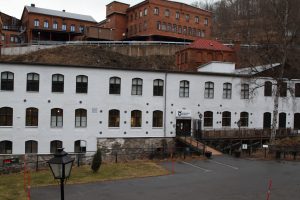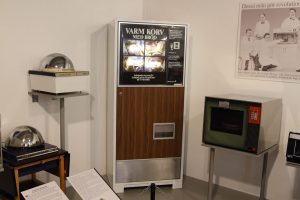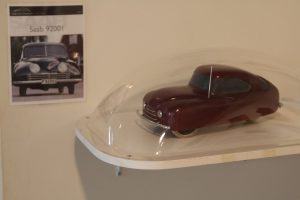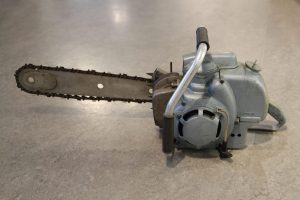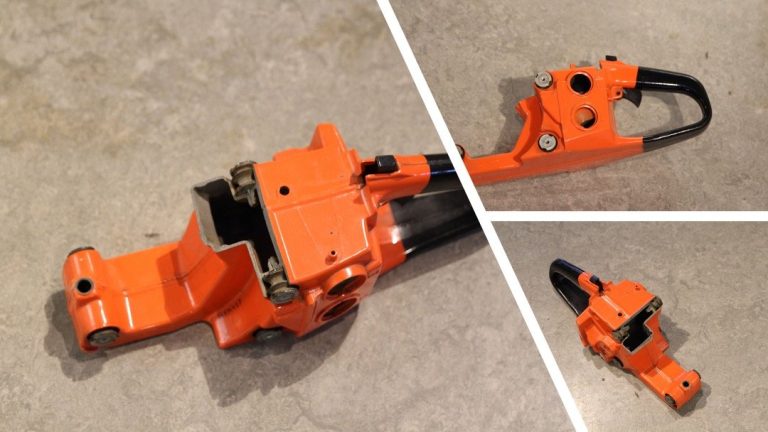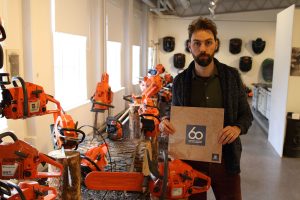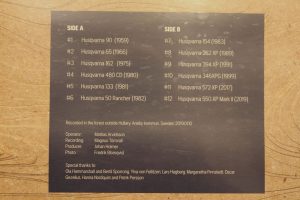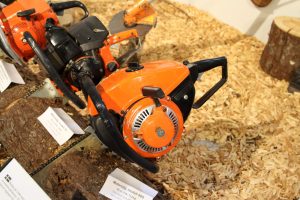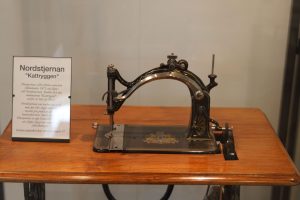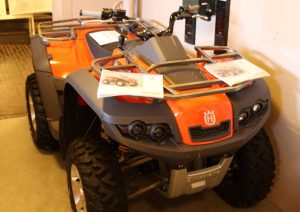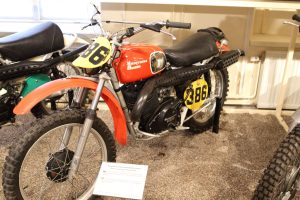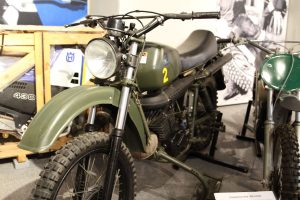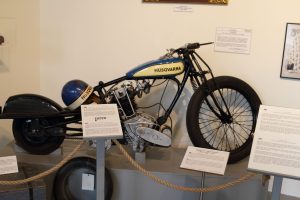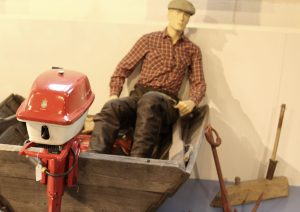In forestry, the brand Husqvarna, or Husky, is well known for chainsaws and other equipment for logging. But the company has been around for over 300 years. It all started with guns, but as peace spread out in northern Europe the need for guns decreased. Many companies in this situation would have disappeared, but Husqvarna didn´t – they started making sewing machines. The rest is history.
The Husqvarna museum – the company history
It all started in 1620 when the Swedish king, Gustaf II Adolf needed to formalize manufacturing of weapons in order to provide the army with rifles. At this time, Sweden was constantly involved in wars on many fronts. Five rifle factories were founded, one of them in the town Jönköping.
In 1689, the first factory was built on the site where today´s Husqvarna factory is located in the town Huskvarna (spelled the modern way). It was due to the availability of hydropower the site was chosen, and soon all production of rifles was moved from Jönköping to this site. The museum is found in one of the older buildings from 1868.
A flexible company
One must say that the Husqvarna company has been flexible. Thanks to the flexibility they have managed to stay in business for 332 years now. When the wars were over, they had to learn to make products for the civil market. But not only that – they had to learn about sales and marketing. The army had just ordered rifles by the minute meaning that no sales department was needed. Now they had to get out there and speak for their products.
The first product for the civil market was sewing machines. It may seem illogical, but the weapon production had made Husqvarna experts in fine mechanics, just like in sewing machines. They already had suitable machines and skills for that so the move was more logical than it may seem.
After 1876 the army definitely stopped ordering weapons and the production of civil products took off. Apart from sewing machines, stoves, cookers, bicycles, typewriters, hunting rifles and all kinds of household products were made. When the 20th century came, bicycles were equipped with motors and soon motorcycles were in the range. Husqvarna were successfully active on the racetracks and in enduro and motocross.
When the World wars came, Husqvarna could quickly go back to weapon production. After World war 2, household products were in focus again. Dish washers and washing machines, microwave ovens, sauna heaters, toaster, stoves, fridges and much much more. My personal favorite was a hotdog machine. You put in a coin, and out came a piece of bread, a warm sausage, some ketchup and mustard. As I remember it didn´t taste too good, but it was cool.
There were even plans to make a car. The Husqvarna car was designed but never produced as the management decided they should stick to smaller products. The designer of the car ended up at SAAB, and you can actually see that on the very first SAAB car as it looks quite similar to the Husky car.
Chainsaw manufacturing starts
In the 1950’s, cars were becoming more and more popular. The Swedes had a good life and could afford a higher standard, so now they choose a car instead of a motorcycle. Due to the decreasing market for motorcycles Husqvarna had to find new products. The forest industry was growing in Sweden and Husqvarna already had experience of making small motors for their motorcycles, mopeds, boat motors and lawn mowers. A decision was made to start manufacturing chainsaws.
There were already Swedish chainsaws on the market. Partner, Comet and Raket who had been underway for some years. But Husqvarna took on the challenge and had their first prototype, called Alaska, ready in 1958.
It was decided that the Alaska project was not good enough to continue. Instead, a new designer was taken over from the household side to give the new saw an attractive design. The MS90 was born and became the first Husqvarna made chainsaw in 1959.
In 1961, an agreement for cooperation with Crecent was signed. Crecent took over the bicycle production from Husqvarna who, among other products, got the Chainsaw Crecent 06. Some improvements were made to the Crecent saw and was launched in 1963 as Husqvarna MS70.
The Husqvarna 65 was presented in 1966 and turned out to be a good base for other tools as well. A clearing saw was constructed with the same base as the 65-saw, and a cutting disc for stone and concrete was also put on the 65. This was the start of a new division within the Husqvarna Group in building and construction.
No good vibrations
Husqvarna’s experience in noise reduction had been very helpful when breaking into the chainsaw market. The Husqvarna mufflers were much better than those of the competitors. But one problem that hadn´t been satisfactory was the vibrations. Different ideas had been tested both by Husqvarna and the competitors but none of these were good enough.
An engineer at Husqvarna came up with the idea to split the chainsaw in three parts; the upper handle, the fuel and oil tanks with the rear handle, and the body with the motor and saw bar. The three parts were connected through vibration damping rubber elements.
This was the big news on the next generation of chainsaws, the 180S that was presented at the Elmia show in 1969, and it opened doors to new markets for Husqvarna.
The size matters
Already the MS70-saw was presented as a saw with which you could delimb efficiently. Husqvarna even offered courses in delimbing with chainsaw at this time. The weight of the MS70 was 8 kilos (17,6 pounds).
In the early 1970’s the focus was turned towards making light saws with comparably strong motors. Saws that were good for delimbing, which was the main job, but also for felling in thinning. The first saw in this direction was the MS140 with a weight of 5,8 kilos (13 pounds), incl. bar and chain.
From this time on, Husqvarna offers a wide range of saws. Small ones, big ones and a line of “farmer saws” that are basically the same as the professional saws but without luxury like heated handles.
Jonsered, Partner and others
By the end of the 70’s, Husqvarna is purchased by Electrolux, a competitor within household equipment. They also purchased the two other Swedish chainsaw manufacturers Jonsered and Partner, and a number of other forestry and horticultural companies. In 1999 the European part of McCulloch was purchased as well.
In 2019 the 60 year’s anniversary of the chainsaw was celebrated with a record, an old-fashioned vinyl LP-album, with 12 chainsaw sounds through history up until 2019. The album was pressed in a limited number of copies that probably were sold within minutes. The museum owns two copies that have never been played.
Husqvarna Group today
In 2006 Husqvarna became an independent company again as Electrolux cut the company off. The Husqvarna Group is today the World’s largest manufacturer of outdoor equipment including lawn mowers, garden tractors, chainsaws and trimmers. Cutting equipment and diamond tools for construction and stone industry is an own division within the Husqvarna Group. The Group’s products are sold in over 100 countries Worldwide.
Three more companies use the Husqvarna brand; Viking Sewing machines, Electrolux and Husqvarna Motorcycles.
The museum
By now you have probably understood that this museum is worth a visit. It´s located next to today´s Husqvarna factory in the town Huskvarna in South Sweden. The museum is run by a local association. The Husqvarna Group are, of course, sponsoring the museum. Apart from some financial help, they own the building and let the museum use it free of charge. As this doesn´t cover the costs of running the museum they also charge an entrance fee.
The museum is in two floors. On the first floor there is a summary of the history showing the important waypoints. On the second floor you can dig deeper into weapons, kitchenware, sewing machines, motorbikes, lawn mowers and – most important – chainsaws.
No matter which brand you prefer to use out there, this place is worth a visit. You will find more information on the museum’s homepage.
Film time!
Here is a film from the museum:
and some more pictures
Film and photos: Per Jonsson






